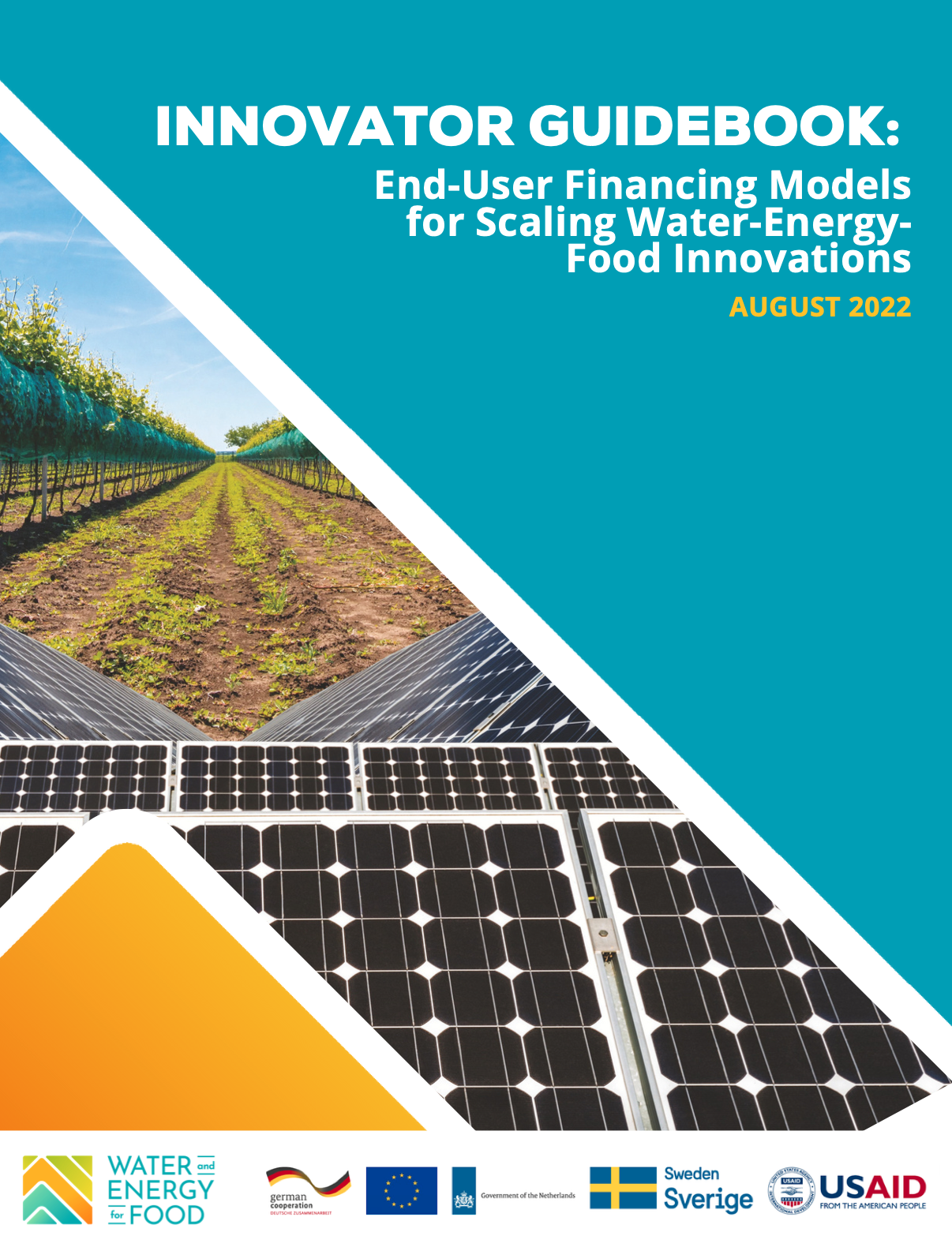Time and time again, it has been shown that access to finance for smallholder farmers can help improve livelihoods and the economy.1However, financing opportunities remain scarce and the ones that do exist often present a set of challenges that rural economies and smallholder farmers are ill-equipped to handle.2, 3
The current lack of options and smallholder farmers’ need for end-user financing creates an opportunity for businesses looking to grow their operations, get climate-resilient innovations into the hands of those who need them the most, and improve food systems’ usage of water and/or energy. If you’re an innovator, incubator, government, investor, or other interested organization, WE4F now has a guidebook that can help you learn more about end-user financing and identify what method may work for your organization and region.
From Past to Present – See All Your Options
The guidebook covers pay as you go, crowdfunding, pay by produce, rent to own, value chain financing, and donor funding as the more innovative end-user financing models, with the traditional models being microfinance, rent as a service, credit unions/cooperatives, and bank loans.
Each model offers its own advantages – and drawbacks. By comparing the different models through summaries, stakeholder points of view, a SWOT analysis, case studies, and implementation steps, WE4F gives guidance to you, the innovators, on how to begin your end-user financing journey.
Why a Guidebook and Why Multiple Methods?
Currently, end-user financing for many developing and rural economies relies heavily on microfinance institutions or family lending. Family lending, while convenient, presents a host of problems due to its unofficial nature. Meanwhile, MFIs operate in underregulated environments which could put clientele at a disadvatage.4 Banks and credit unions’ availability is highly reliant on a pre-existing loyalty and data with said institution, a fact that instantly disqualifies many smallholders from access to credit.5 These different traditional end-user financing models do have their usage, but with newer models available, it is important for your organization to have all of the updated and relevant information.
By comparing the traditional with the newer models, innovative end-user financing methods can address the needs of your end-users through customization and an ability to adjust models. In turn, access to finance is greatly improved for traditionally underserved groups while also allowing you, the innovators in the water-energy-food nexus, to reach a wider audience and have a larger environmentally positive impact.6
Next Steps
If you’re looking to integrate end-user financing into your operations, make sure to read the guidebook and stay tuned for future blog posts. WE4F will be running a blog series on end-user financing and sharing the stories of different innovators from around the world.
Endnotes
- Yifu Lin, Justin. “Agriculture Is Key for Economic Transformation, Food Security, and Nutrition.” Ifpri.org. International Food Policy Research Institute, February 8, 2018.
- Fan, Shenggen, Joanna Brzeska, Michiel Keyzer, and Alex Halsema. “From Subsistence to Profit: Transforming Smallholder Farms.” Ifpri.org. International Food Policy Research Institute (IFPRI), 2013.
- Karnani, Aneel. “Microfinance Misses Its Mark.” Stanford Social Innovation Review 5, no. 3 (2007): 34–40.
- Schmidt, Oliver. (2017). “Is microcredit a debt trap?.” Development and Cooperation. 2017. 17.
- Castell, Helen. “Connecting Traditional Banking to Small Farmers: Innovate for Impact.” Devex. Devex, June 13, 2016.
- Brown, Amy. “Sustainable Agriculture Is Now a Huge Investment Opportunity.” Sustainable Agriculture Is Now a Huge Investment Opportunity. Triple Pundit, August 18, 2020.


